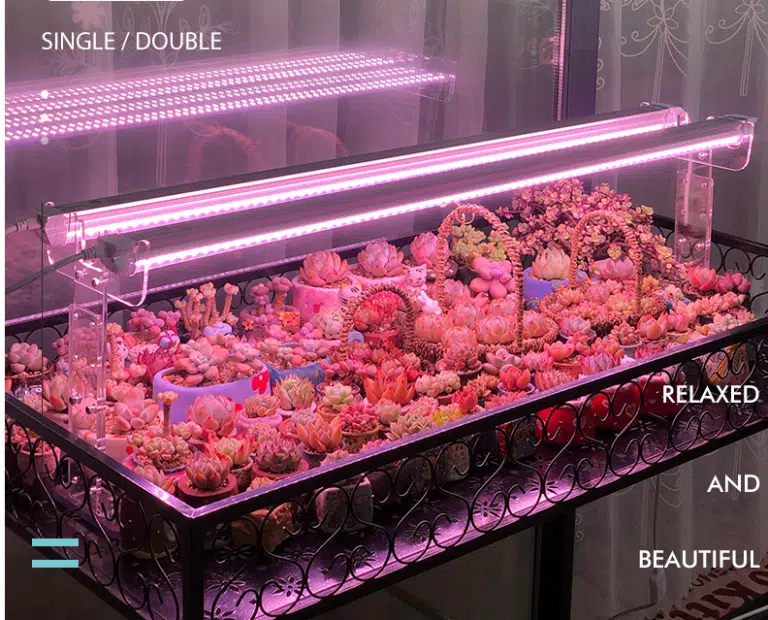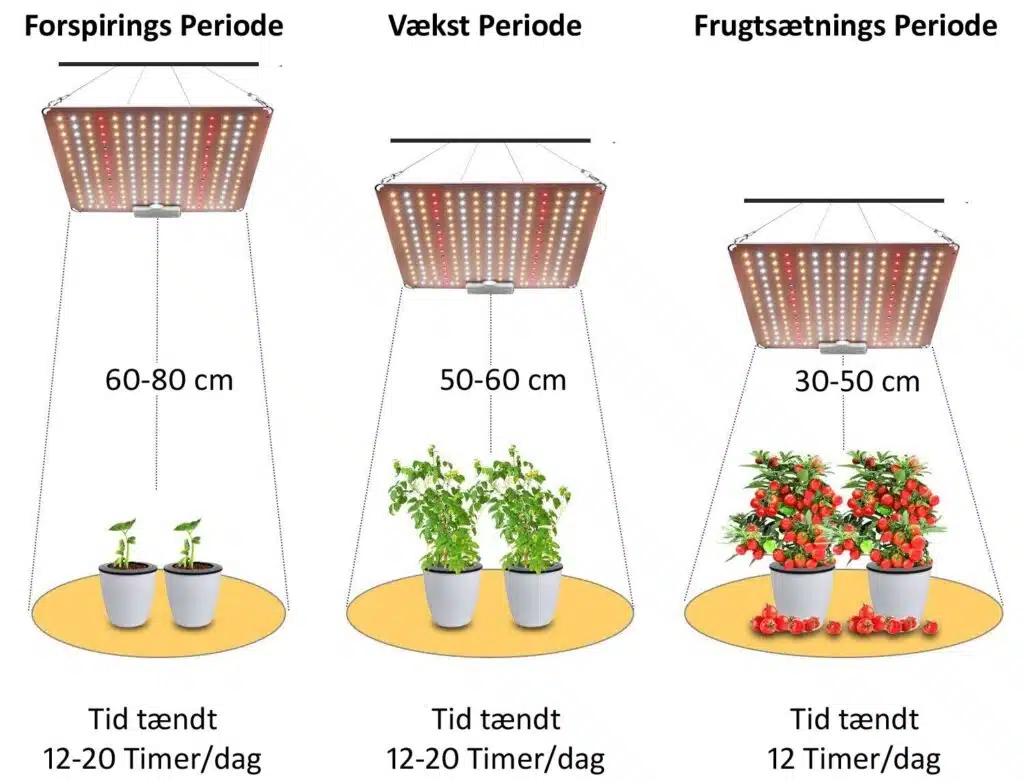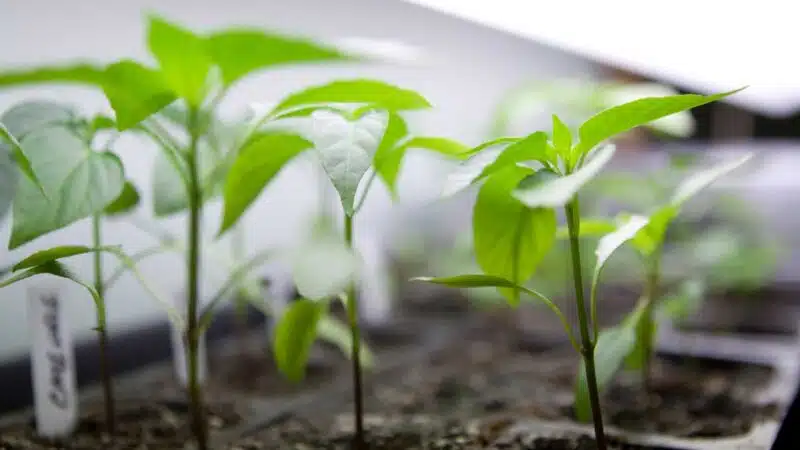If you've recently researched the market for growth light. You may have observed a wide selection of artificial light sources (grow light) for plants. These light sources come in the form of lamps, bulbs and more. They vary in light colour, shape and price.
We're going to dive into which types will best fulfil your pre-germination needs.
Table of contents
TogglePre-germination on the windowsill
For the first few days after you've sown your seeds, no light is needed as all seed development takes place underground. On the other hand, it is important to have the correct temperature and humidity for the seed. It's a good idea to keep the temperature around 18-24 degrees C.
As soon as the first cotyledons appear on the plants, lighting is needed. This is because the plant sprouts are unable to produce chlorophyll (which is what gives plants their green colour). As well as produce energy for growth.
We started, like many others, by pre-germinating my plants on the windowsill. We said at the time.
"Right away, it's possible to pre-germinate without any artificial light."
There are some challenges associated with this. One of the well-known ones is that plants can grow lanky. This is characterised by long thin stems and a significant distance between leaves.
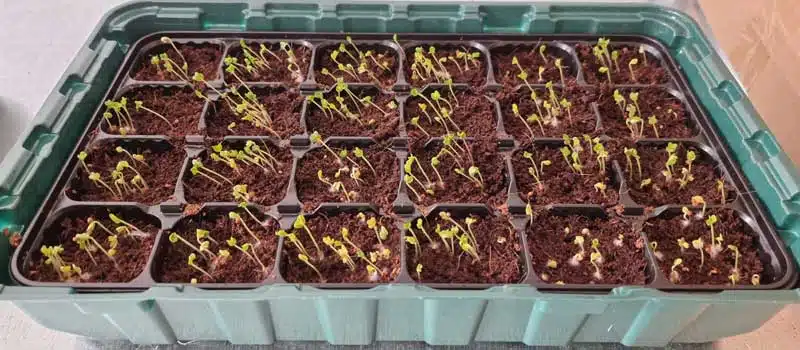
The problem can be partially alleviated by starting pre-germination later in the year. It is recommended to start at the end of March or a little into April.
This ensures that the plants get enough sunlight to grow under normal conditions.
This means that the plants are only ready for planting at the end of May or in June.
It doesn't provide a very long growing season, and thus a smaller yield compared to what could have been achieved by planting in the greenhouse/garden as soon as the temperature allows.
Do you want to be ready with pre-sprouted plants as soon as the weather permits? That's why you need to start your pre-germination much earlier.
The solution is that when you replant your plants; you bury them very deep in the new pot. Of course, this will result in some very small plants, as the rest are buried underground.
Therefore, it is necessary to add extra light to your plants if you want to make better use of the short Danish growing season.
Light in the germination phase
During the germination phase, plants require less light intensity. It's a longer growth period, which means that grolyset should be left on for a longer period of time.
Often up to 16 hours.
In this phase, the light should be more blue-white. However, this is not a requirement as most plant sprouts will grow quite well under a full light spectrum.
Read more about it on our website here
Which grow light is the best for pre-sprouting plants?
With years of experience and experimentation with the use of artificial light, we have gained a wealth of experience.
We know what works and what doesn't when it comes to choosing the right grow light, for the different phases of plant growth.
Plants are as diverse as humans. They need different light compositions and brightness levels depending on their growth phase and species.
To determine which type of light and light intensity is best for your plants, it's necessary to first introduce you to some technical terms.
- Watt consumption: Tells you how much energy your lamp uses. It tells you nothing about how much light is coming out of the lamp. Only how much energy it uses.
- Lumens: Tells you how much light (brightness) a light source emits compared to what humans can perceive, not to be confused with what plants need.
- Kelvin: Here we're talking about the colour of the light. For example, the bulb you use in your lamp is 2700K - a warm light. Daylight from a north-facing window is about 5000K in Denmark, and at the Earth's equator it is 6500K.
Read more about it here
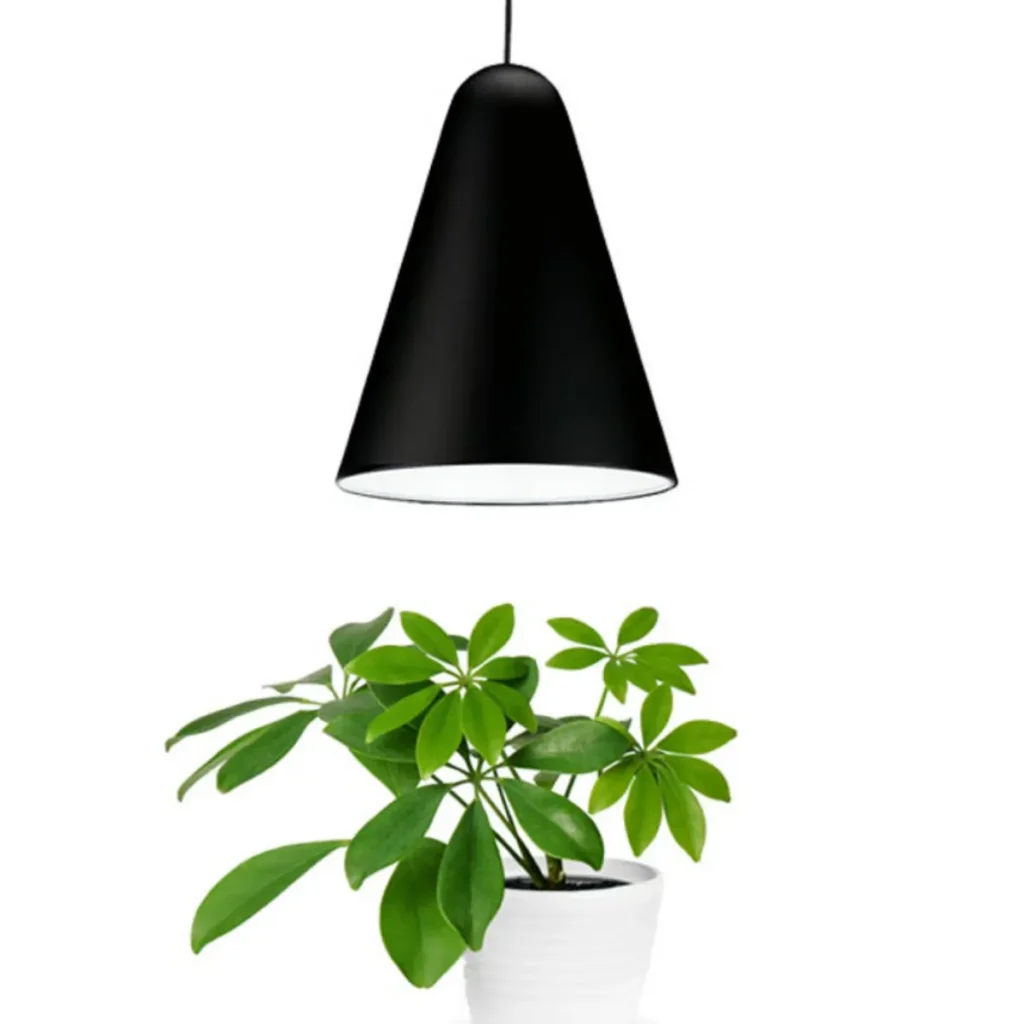
Light for plants - understand the concepts
Plants need some additional concepts to assess whether a light source is suitable for plant growth:
- Wavelength: Here we are talking about the colours that light is composed of. For example, white light, also known as full spectrum light, of all wavelengths between 400 to 700nm. Blue light is around 440-460nm, green around the 500nm and Red light In addition, there is of course UV light, which is below 400nm, and infrared light, which is above 700nm.
- PAR lights: The most important concept in light for plant growth. PAR light tells you exactly how much light the plants get from the light they receive.
- Also known as plant brightness, it is not measured in Lumens or Lux, as for humans, but in PPFD (Also read: How many µmol/PPFD does my plant need to thrive?), and is measured in µmol/m2/sec. (brightness of 1 m2 per second).
- In the middle of a summer day, we receive approx. 2000 µmol/m2/sec. (equivalent to approx. 100,000 Lux), and on a dark winter day approx. 10 µmol/m2/sec. – Which is very far from what plants need! Read more here: What are PAR grow lights?
To pre-sprouting plants, you should have min. 150-200 µmol/m2/sec. for sensible growth, the higher the better for your plants. Remember that PAR brightness varies with distance, so check if the lamp or light source provides enough light for the purpose at the distance you plan to place the lamp over your sprouts.
How far from the plants should the green light hang?
The short answer is that it depends on the brightness of the lamp (PPFD), the more powerful the lamp, the further away from the sprouts you can hang the lamp. - In addition, the more powerful the lamp, the more area it can cover.
The attentive reader will notice that the closer the lamp is to the plants, the brighter the light, but also that grow light lamp covers a smaller area.
This is a problem as plants grow larger over time. This means they take up more space and need more light. This is so that they don't stretch too much.
This means you'll need more lights as the plants grow - which can quickly become expensive.
A lamp for all growth phases
A better solution is to choose a grow light where you can change the height of the lamp, while still being dimmable.
This means you can turn down the brightness and hang the grow light close to your plant sprouts while they are small. With this you save on energy. As the plants grow, you can increase the height and brightness of the grow light.
Pink / purple light lamps and bulbs
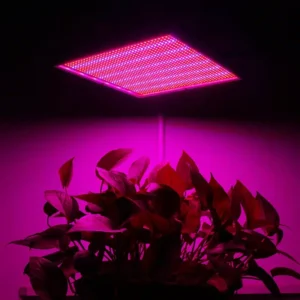
Around the web, you'll see plenty of cheap lights that emit a pink or purple light.
It is possible to do pre-sprouting with a pink/purple light (lamps that are made with only Blue 450nm + Red 730nm LEDs) as long as the brightness (µmol/m2/sec) is high enough, but this is not optimal.
The problem with this kind of light is that all the energy is deposited in the top layer of the leaves, only in the top of the plant. This doesn't matter as long as the plants are small and only have 2-3 layers of leaves (1-10cm).
As soon as the plant gets bigger, the problem arises. The plants don't receive enough energy for growth, and you end up with a plant that grows slowly or where growth almost stops.
On top of that, it's hard to see if the plant is affected by disease or pests. The pink light is definitely not pleasant to the eyes!
If you delve a little deeper into the latest research and look at what the professionals are doing. You'll find that most of them recommend and use white: "full spectrum light".
It has been shown that most plants thrive better with this light. Personally, I also think it's a much better working light and you can enjoy your plants as they grow.
We therefore strongly recommend using light sources with full spectrum white light. This means that the light will penetrate all the way down through the leaves and along the entire height of the plant.
This allows the plant to perform at its best and give you the best-looking results.
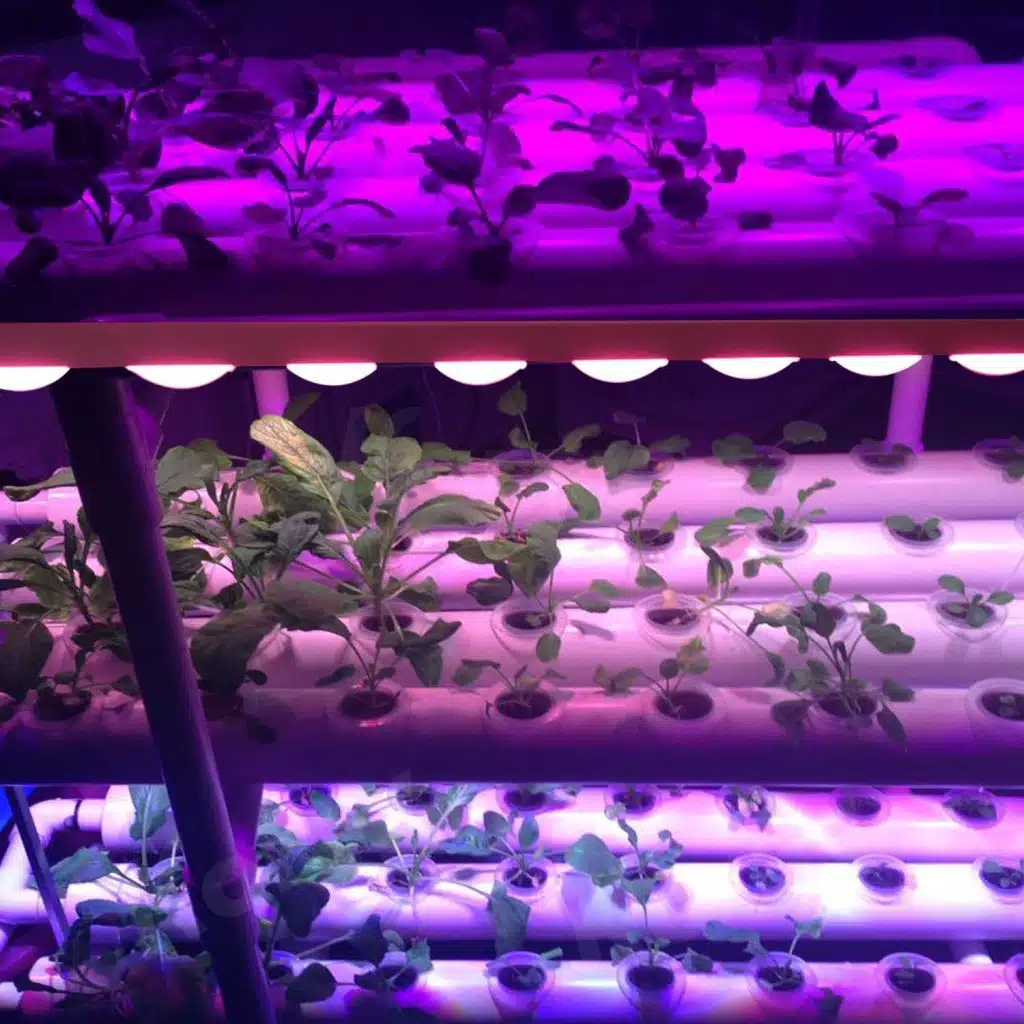
How long should grow lights be on?
The short answer is 12-16 hours for seedling germination.
The long answer is that it depends on the grow light you choose.
This is where it's time to introduce a new concept:
DLI - Daily Light Integral - refers to the cumulative amount of PAR light. received in an area of 1 square metre each day, represented as mol/m2/day.
Read more about DLI here
Without going too deep into it. It means that the brighter the light a plant receives, the shorter the lighting time per day it needs.
An example with 2 different lamps:
The assumption is that we need a DLI of 10-12 moles per day for pre-germination.
1. A 100 Watt lamp gives 261 µmol/m2/s w. 60cmthis means that your sprouts have enough light after a minimum of 11 hours of light/day.
2. 40 Watt grow light lamp gives 126 µmol/m2/s w. 50cm; this means that your sprouts have enough light after a minimum of 26 hours of light/day, which is obviously not possible.
The solution is therefore to hang the lamp closer to the seed sprouts. Here, the optimal distance would be 25-30 cm. This means that we can illuminate a much smaller area with the optimal brightness.
It should be said right away that most plants can cope with less light and still survive.
We want beautiful and vigorous plants that have the best chance of surviving and producing a high yield. Light is a must.
Measure bulb brightness with an app: "Photone"
There is a way to measure the brightness of your bulbs with your mobile phone.
It is important to note that this is an indicative measurement, as it can vary greatly depending on how good an examiner you have on your mobile phone.
You can't really count on the result, but we think it's a good idea because it gives you an idea of where you are, and you can also see if your plant is getting the right amount of light.
ATTENTION. It only works on full spectrum light source (The White).
It cannot measure on pink/purple light sources.
Read more about the app here
FAQ - Frequently Asked Questions
In general, keep grow lights on for about 12 to 18 hours a day, depending on whether the plant is growing or flowering - fewer hours when it's flowering and more when it's growing. Remember, it's also essential to give them a break in the dark so they can follow their natural rhythm.
For pre-germination, you'll need seeds, a good starter soil, small pots or trays for the seeds, and grow lights to ensure adequate illumination. Also remember to keep the soil moist, but not wet.
The power consumption of grow lights depends on the type and wattage.
LED grow lights are often the most energy efficient, using around 20-50 watts per square metre. Remember, total power usage will increase with the number of lights and hours they are switched on daily.
Place the grow lights close above your plants. Typically between 30 to 60 cm apart. Make sure they are switched on for 12 to 18 hours a day to mimic natural sunlight.
Adjust the height as the plants grow to avoid damage.


